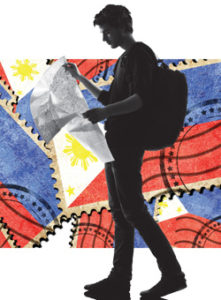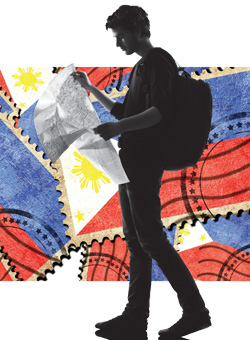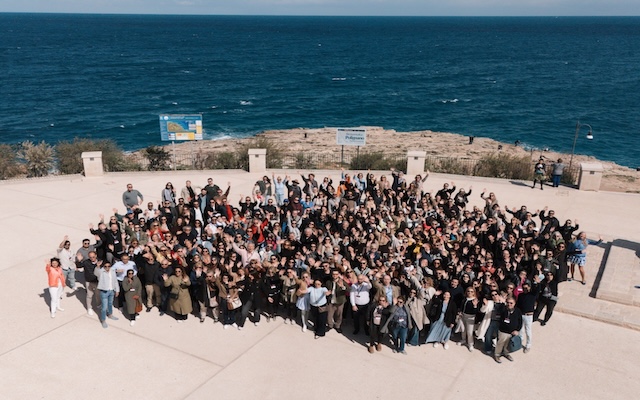Has the Philippines’ colourful tourism campaign, which proclaims ‘fun’ as its slogan, lived up to its expectations for the trade? Rosa Ocampo finds out

The Department of Tourism’s (DoT) It’s More Fun in the Philippines campaign is a marketing success and has raised the country’s profile as a leisure destination, but in the years since its inception in 2012 there are questions if the slogan has been an overpromise.
Philippine tourism undersecretary Benito Bengzon Jr contended that the 10 per cent average growth in foreign arrivals during the last five years is higher than the average growth rate of global (4.5 per cent) and Asian (five per cent) tourism, putting the country “above the curve”.
Proof of the campaign’s marketing success, he added, also lies in the numerous citations and awards the destination has received. In 2014, the campaign took up third spot in the Warc 100, an annual ranking of the world’s best marketing campaign.
With 55 million domestic tourist arrivals versus just 5.3 million foreign arrivals last year, a major success of the campaign can be attributed to its popularity among the Filipinos themselves, opined David Keen, CEO of Quo, specialist branding and communications agency for travel and tourism.
The campaign struck a chord among the Filipinos who created 80,000 memes out of it; many companies have even taken the initiative to stamp “It’s More Fun” into their own marketing.
Yet the campaign also presents a “very one-dimensional image” of the Philippines, Keen surmised, portraying the nation as one that simply revolves around fun with colourful culture, vibrant entertainers and fun-loving people.
“The Philippines needs to be taken far more seriously,” he said, emphasising the need for a multidimensional country brand that allows for wider range of experiences and associations.
“Caves, jungles, beaches, festivals, scuba diving and fun certainly have a place in this brand, but the brand should be complex enough to have room for everything else the Philippines has to offer”, said Keen, citing the strong economy and booming construction sector as other facets that could be included in the country branding to enhance the destination’s attraction to different types of travellers.
Keen added: “In the imagination of a potential traveller, associating a country with a strong economy, profit and productivity opens up new possibilities of experiences. A stable domestic base will then be attractive for foreign big brands, and the cycle continues.
“While (the campaign) does not portray the Philippines negatively, its current incarnation does not even begin to capture how this moment is an exciting one for the Philippines in terms of business, growth and development”, he explained.
Focusing on the fun factor has its limitations too, pointed out Mina Gabor, former Philippine tourism secretary and now president of the International School of Sustainable Tourism. The campaign was, for example, was held back for months after super typhoon Haiyan wreaked parts of the Visayas in 2013.
But Bengzon, while agreeing that the Philippines has many qualities other than fun, saw the need to craft a clear tourism campaign message without diluting it with other dimensions.
“It’s very clear for tourism: the distinct advantage of the Philippines is the ability of Filipinos to provide the fun experience and that is what we highlight in the campaign… From a marketing standpoint, you have to look at the lead proposition – which is fun,” he asserted.
Bengzon also claimed that the campaign, contrary to claims that it’s targeted mainly at leisure travellers, “cuts across all travellers be it leisure, visiting friends and relatives, education and business”.
Branding aside, has the campaign travellers’ expectations of fun and led to more business for the trade then?
Jackeline Navarro, manager of Palawan-based Inland Tours and Travel, said that the campaign helped improve their business and made Palawan more popular, echoing the general trade sentiments that the campaign was effective.
However, the Philippines’ infrastructure woes continue to cap tourism growth as difficulty of access deters foreign visitors with limited vacation time.
For Navarro, the campaign impact would be better if there was better connection within Palawan itself and with other destinations. There is no flight between Puerto Princesa and Busuanga, two gateways to Palawan, with only a twice-weekly charter flight between another gateway, El Nido and Busuanga.
Bernadette de Leon, general manager of Amiable Intertours, qualified that the campaign is questionable in many ways. “How can you have fun when flights are delayed or cancelled, road traffic is chaotic, infrastructure is not world standard, beggars are in the streets and garbage is everywhere?”
Sources interviewed by TTG Asia mentioned three main challenges: inadequate infrastructure, connectivity and the China factor.
What is sorely missing is a new airport in Manila. Ninoy Aquino International Airport (NAIA), where 72 per cent of all international passengers pass through, is already heavily congested, causing frequent flight delays and cancellations. However, apart from palliatives like expanding and improving the passenger terminals of NAIA, the government still hems and haws on plans for a replacement airport.
Infrastructure in the Philippines is improving, with secondary airports and major thoroughfares being built and improved. The DoT is working with the Department of Public Works and Highways to construct and maintain access roads to major tourist destinations.
Air connectivity has improved substantially since the DoT formed its route development team in 2013, which liaises directly with airlines to persuade them to fly to the Philippines. Further improvements are expected with the implementation of the ASEAN single aviation policy, allowing foreign airlines to mount flights to Manila, not just to secondary destinations.
While It’s More Fun in the Philippines is a brilliant campaign, the destination is still sorely missing out on the China market, noted PATA CEO Mario Hardy. The Philippines’ political tension with the Asian behemoth has not aided the inbound tourism sector.
“Forget about politics and just have discussions directly with tour operators and travel agencies in China,” advised Hardy, urging the Philippine private sector to band together and conduct joint trade missions to China.
Should It’s More Fun in the Philippines campaign be continued or is a change in order four years after its launch?
While some industry players want to maintain the status quo because of its obvious effectiveness, Amiable Intertours’ de Leon strongly favours reverting to WOW (World of Wonders) Philippines campaign, the predecessor of It’s More Fun in the Philippines.
“The word ‘fun’ will be abused when the truth of the matter is disappointing and questionable,” she said. “The Philippines has more to offer than any other country in Asia in terms of resources and attractions, yet the long list of ‘buts, ifs and we hope things will get better’ is still a long way.”
Said Keen: “A brand is only successful if it can live up to the promise and expectations it wants others to have.
“Hopefully in the near future, the Philippines will be more than just fun.”
This article was first published in TTG Asia, May 6, 2016 issue, on page 6. To read more, please view our digital edition or click here to subscribe.

















